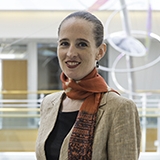Evolutionary Approaches to Kinship and Family
Anthropology has a long and varied history of engaging the topic of kinship. Well underway by the time the first academic department in anthropology was established, by the 1980s kinship theory was deemed defunct by many anthropologists, to be partially resituated within the context of gender and personhood studies. Contemporaneously, it reemerged as an area of study in evolutionary anthropology (EA). In contrast to other emergent perspectives, EA finds biology offers a powerful explanatory framework through which to examine kinship systems. Here, we highlight briefly some of the recent advances in the evolutionary anthropology of kinship, drawing attention to a relatively neglected, yet highly synthetic, perspective on the study of kinship. In doing so, we hope to (1) illustrate that new approaches to the study of kinship consist of more than just explorations of NRTs, new family forms, and related topics, and (2) encourage a holistic view that melds biological and cultural influences on human kinship.
EVOLUTIONARY ANTHROPOLOGY SYNTHESIZES DIVERSE PERSPECTIVES ON KINSHIP AND FAMILY
EA is a broad field, but is unrelated to the unilineal evolutionism previously applied to models of kinship and society. Contemporary EA defines “evolution” as the temporal change in gene frequencies in a population. EA behavioral studies do not examine gene frequencies directly, employing instead the “phenotypic gambit”, which assumes a relationship between observable traits (eg, behaviors) and the underlying genes and expects both biological and behavioral plasticity to emerge from a common basis through gene-environment interactions. Engaging evidence from other evolution-based disciplines, EA sees human kinship systems as products of both universal goals and particular sets of constraints associated with individual circumstances and larger social and environmental contexts. As such, it provides a synthetic framework for understanding kinship and family, embracing variation in family form and function, and incorporating biological and cultural considerations. Indeed, one of the strengths of EA is that general models are tailored to fit the specific circumstances of groups and individuals under consideration, making ecological and cultural context key to understanding kinship and family.
SOME EXAMPLES
While anthropologists have long established that kinship structures life in preindustrial societies, it was biologist William Hamilton that contributed one of the most important frameworks in the evolutionary study of kinship, arguing that, all things being equal, the degree of biological relatedness increases the probability of “altruism” and cooperation. Applications of his “kin selection” theory to ethnographic concerns such as food exchange, adoption, coalition formation, and inter-generational resource flows have demonstrated its power to answer old questions. More recently, this has led to the discovery of common but previously unrecognized patterns of biased nepotism, for example, that variation in paternity certainty and wealth affect whether “altruism” is biased toward matrilateral or patrilateral kin. Well aware that kin do not always behave kindly toward one another, however, EA approaches also predict that local competition over limited resources can lead to strife among kin who might cooperate in better times.
Another example of the insights of EA derives from Siobhán Mattison’s study of kinship among the Mosuo (Na) of Southwest China. Increasingly and erroneously provided as an example of promiscuity, the nonexistence of marriage, and low paternal investment, the Mosuo have supplanted the Nayar as textbook examples of an extreme reproductive system. Yet EA would suggest that the Mosuo are not extreme, but rather motivated by the same factors, albeit under different circumstances, as are most people establishing reproductive partnerships. Indeed, in contrast to reports of promiscuity and father absence, Mattison has found that the Mosuo vary in their reproductive and parenting commitments according to wealth and opportunity structures just as individuals in any society might. Mosuo do marry and they do so when they feel it benefits their well-being or that of their children.
 Mosuo fathers often engage in childcare. This father and daughter reside in a relatively poorly documented patrilineal region of Yunnan. Photo courtesy Peter M Mattison
Mosuo fathers often engage in childcare. This father and daughter reside in a relatively poorly documented patrilineal region of Yunnan. Photo courtesy Peter M Mattison
Mary Shenk has used EA to provide insights into the practice of Indian dowry, arguing that, contrary to common associations of dowry with discrimination against daughters, dowry can also function as a form of parental investment in daughters. In her work, she finds that dowries attract wealthy grooms, and improve granddaughters’ education and grandsons’ financial prospects. Furthermore, high wedding costs are consistent with a costly signaling model of EA, such that the amount spent on wedding functions in a woman’s marriage increases investment in her children, and the quality of her later-married siblings’ spouses. Such models are of course not entirely unique. For instance, the parental investment model is similar to Goody’s idea of diverging devolution. Yet evolutionary models provide a broader, more formal framework allowing comparison among diverse human and non-human populations.
 Milk ritual in a Vokkaliga (Gowda) wedding in Bangalore (now Bengaluru), India, circa 2001. Photo courtesy Mary K Shenk
Milk ritual in a Vokkaliga (Gowda) wedding in Bangalore (now Bengaluru), India, circa 2001. Photo courtesy Mary K Shenk
Finally, evolutionary anthropologist Kristen Hawkes’ path-breaking work on the role of grandmothers in foraging societies has led to a renewed interest in alloparenting (childcare by non-parents). Her argument that grandmothers have strong biological motivations to support their daughters’ reproduction by providing childcare and nourishment has led to a virtual explosion of research on the role of grandmothers as vital helpers in a large range of human experience from small-scale societies, to historic Japan and Germany, to contemporary urban peoples worldwide.
ADDRESSING CRITICISMS AND ABANDONING POLEMICS
There have been various criticisms of EA studies, and EA has frequently developed in response to them. The most recalcitrant criticism is the idea that genes or other aspects of an individual’s biology solely determine behavior. Modern EA typically rejects simple genetic determinism, however, operating on the fundamental tenet that biology and culture interact in affecting norms and behaviors of interest. Adoption is a case-in-point: The degree to which biology or genetic relatedness structures adoption is highly dependent on social context, from kin fosterage among Pacific Islanders with fluid kinship systems to adoption of complete strangers among Westerners with relatively nucleated family structures. Indeed, some of the strongest criticisms of simplistic determinism derive from evolutionary anthropologists (eg, Lawson et al’s 2008 Journal of Evolutionary Psychology article rejecting unfounded assumptions made by Kanazawa in “explaining” suicide bombing among Muslim men).
Likewise, we argue that EA’s long-running oppositionality with sociocultural anthropology is more apparent than real. EA has a great deal in common with sociocultural anthropology. For example, anthropologists using evolutionary and critical theory paradigms share the approach of methodological individualism – beginning with the individual as the key point of reference and using the individual’s motivations and strategies as primary analytical foci. The concept of agency is also relevant in both paradigms, with evolutionary researchers focusing on understanding how individuals make decisions given their position within a larger social context. EA also shares many methods with sociocultural anthropology: we engage in long-term ethnographic fieldwork involving interviewing and participant observation, teach similar courses (cultural anthropology, social organization, area studies, ethnographic methods), and emphasize the use of theory to understand culture and behavior.
CONCLUSION
In our experience, concern about EA is often based on outdated stereotypes. When two of the co-authors (Mattison and Shenk) organized a session on evolution and kinship at the 2009 AAA meetings, many non-evolutionary scholars attended and expressed interest in the theory and interpretations presented. Several audience members thanked us for organizing the session, which allowed them to keep up with new developments in a field they felt had become marginalized in mainstream cultural anthropology. In that session (since published in Human Nature, volume 22) and here we have striven to promote EA as a synthetic framework uniting biological and cultural perspectives on human kinship under one theoretical rubric. While we realize that all anthropologists may not embrace this approach, we hope that we have succeeded in (1) highlighting an important and growing perspective in the study of anthropological kinship, and (2) emphasizing the need to maintain anthropological pluralism. If you are intrigued by our perspective, we urge you to explore the evolutionary literature surrounding kinship and to engage with the Evolutionary Anthropology Society of the AAA.
Siobhán M Mattison is a lecturer of biological anthropology at the University of Auckland and AN’s contributing editor for the Evolutionary Anthropology Society. She is interested in where cultural and biological anthropology intersect to explain human variation. She actively conducts field research in Southwest China among the ethnic Mosuo.
Mary K Shenk is assistant professor of anthropology at the University of Missouri. Her research combines evolutionary, economic, and demographic approaches to investigate how individuals make decisions about marriage and reproduction. She currently has an NSF-funded project comparing multiple causes of rapid fertility decline in rural Bangladesh.
Raymond Hames is professor and chair of the University of Nebraska–Lincoln anthropology department. Most of his research has taken place in southern Venezuela among the Yanomamö and Ye’kwana. As a behavioral ecologist, his interests include the flow of goods and services, cooperation, kinship, offspring investment, and marriage.


